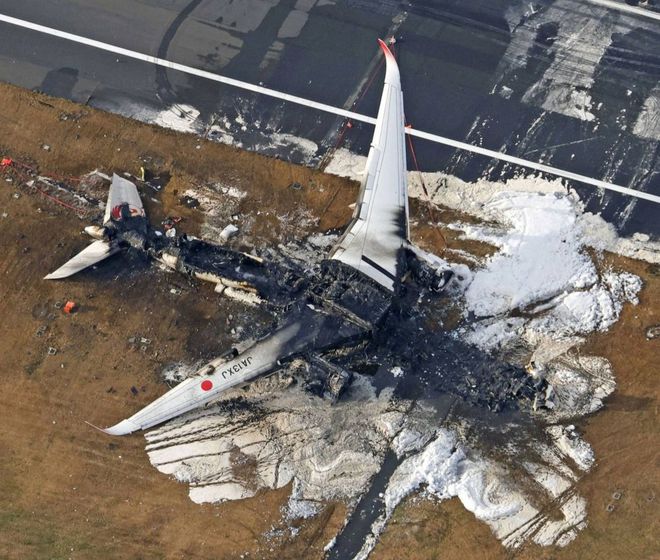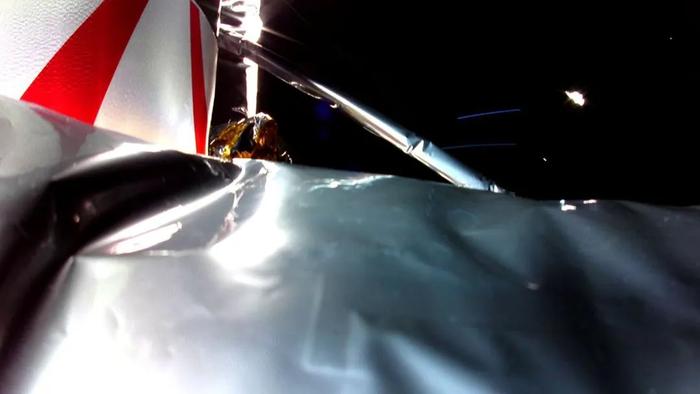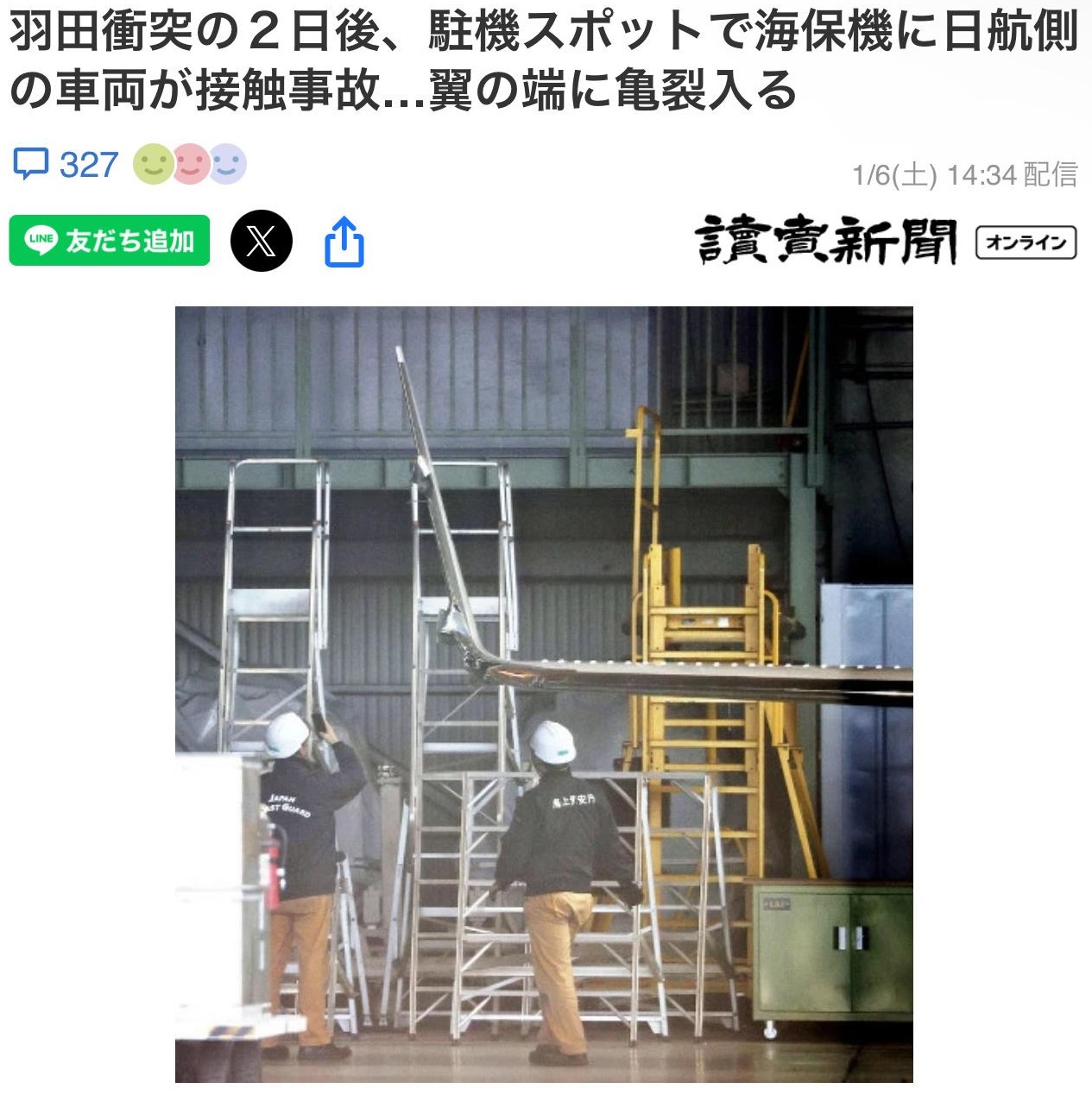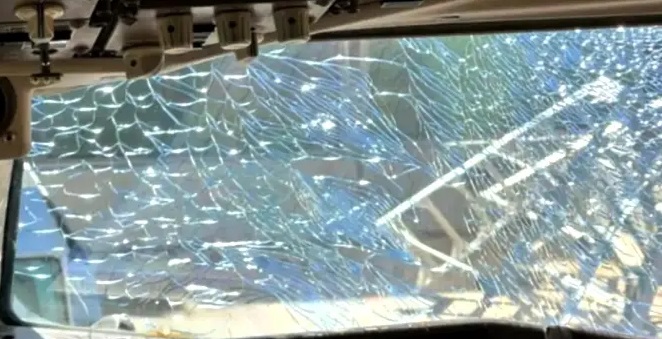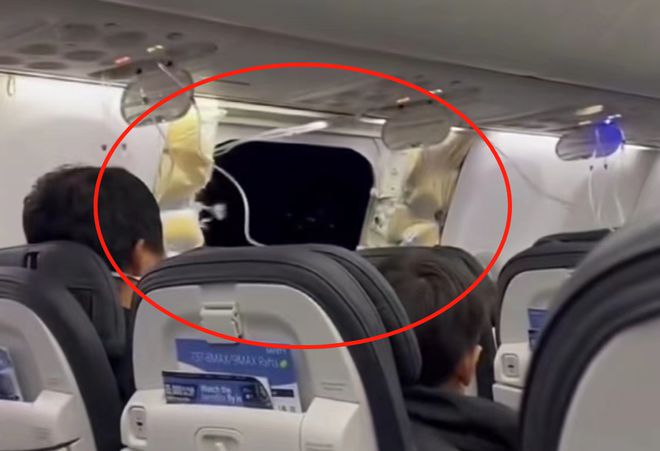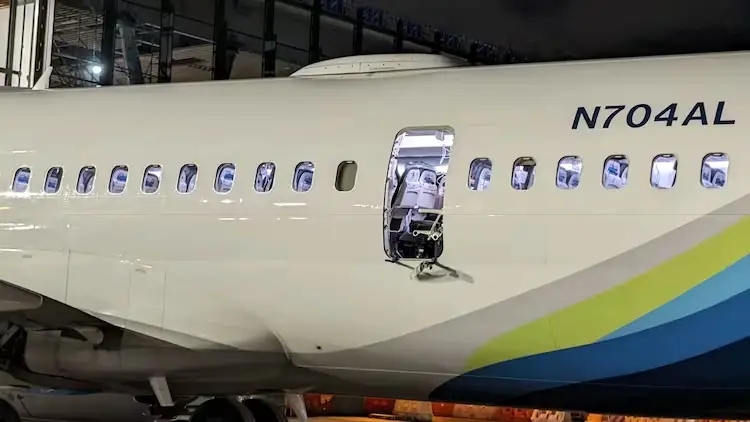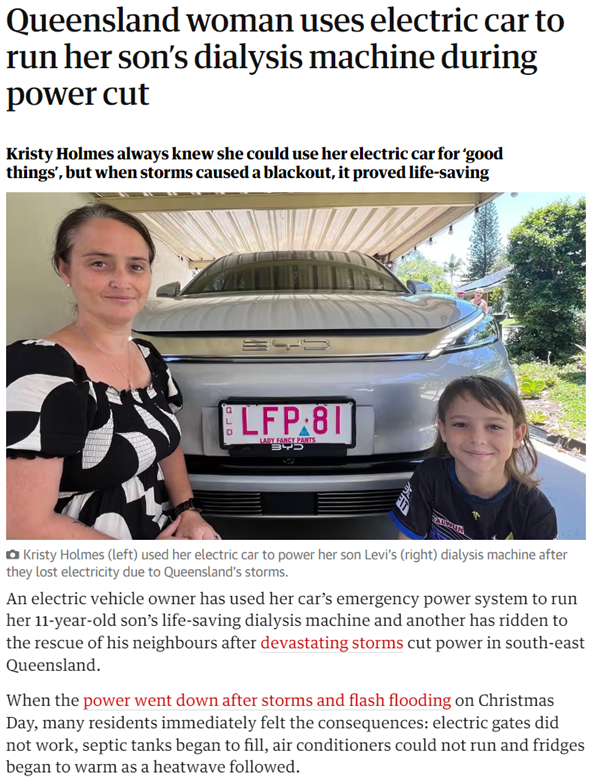In early January 2024, Science and Technology
Writer: admin Time:2024-01-24 09:21 Browse:℃
In early January 2024, Science and Technology did not fall down as you may have seen as follow
According to the Tokyo Fire Department INFO., a total of 17 people were injured on the Japan Airlines plane that caught fire in the "Tokyo Haneda Airport collision". Four of them were taken to the hospital, two of them received treatment for inhaling smoke, two were mildly injured, and the remaining 13 were slightly injured, all of whom went to medical institutions on their own. Previously, it was reported that the 367 passengers and 12 crew members on this JAL Flight 516 had safely escaped.
According to previous reports, according to the Japan Coast Guard, the Coast Guard aircraft that collided with a Japanese Airlines passenger plane belonged to Haneda Aviation Base. The aircraft model was the Bombardier DHC-8, with a total length of 25.68 meters, a width of 27.43 meters, and a height of 7.49 meters. At the time of the incident, the plane was preparing to transport supplies to the earthquake stricken area of Ishikawa Prefecture. The accident caused 5 out of 6 people on board to die, and another person, the captain, was seriously injured.
According to various sources, at around 5:47 pm local time today (January 2nd), a Japanese Airlines aircraft flying from Hokkaido Shin Chitose Airport to Tokyo landed on runway C at Haneda Airport and collided with a Coast Guard aircraft on the runway, causing the aircraft to catch fire. The captain of the plane at the Coast Guard fled and reported to the security guard at 5:55 pm local time that the plane exploded on the runway.
More investigations are currently underway regarding this accident.
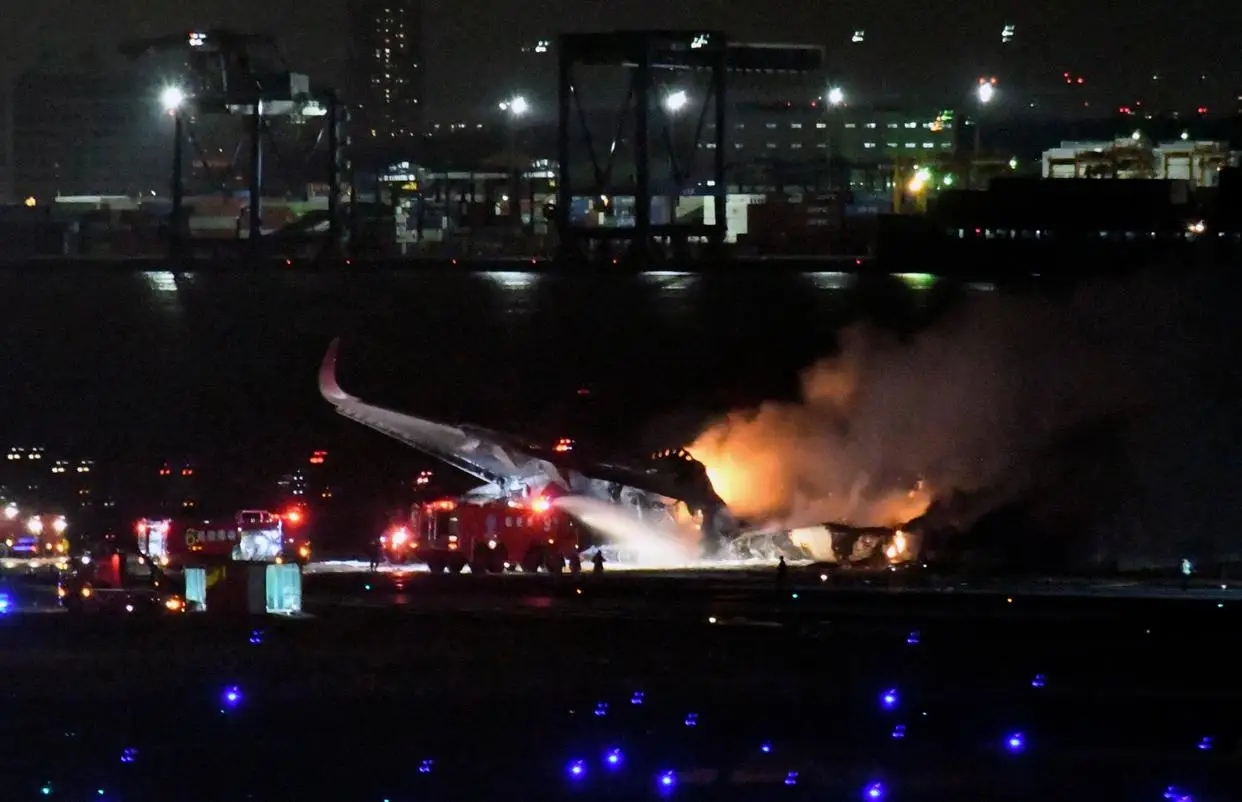
QCIT Group once again declares that we cannot accept any unfair comments made against Japanese Civilians, even though their administrators have falsified technical standards and weak environmental awareness over the past few decades. However, we should not blame the ordinary Japanese people for all of these.
The first commercial lunar lander in the US experienced propulsion system failure or was unable to land as planned. As part of N's commercial lunar payload service program, A's P.F. lander was launched from L.P. 41 at CCAFB in Florida, USA, aboard the Joint Launch Alliance's Mars Centaur rocket.
As part of N's CLPS and Artemis programs, the P.F. carries a set of N's scientific instruments and commercial payloads. These payloads are aimed at helping N develop the capabilities required for the Artemis program's lunar exploration, preparing humans for missions on the lunar surface.
After about 50 minutes of launch, A's P.F. lander separated from the J.L.A.'s Mars Centaur rocket and successfully launched, embarking on its journey to the moon. However, the lander encountered propulsion issues after entering operational mode, causing the solar panels to be unable to align stably with the sun.
The A team stated that efforts are being made to investigate related issues. The research team believes that the possible reason for the inability of solar panels to stably align with the sun may be due to abnormal propulsion. If proven to be true, this will threaten the spacecraft's ability to make soft landings on the moon. While the research team was working hard to troubleshoot, the battery level of the P.F. also reached its operating limit. Before entering a known communication interruption period, the research team formulated and executed a temporary operation to adjust the direction of the solar panels to face the sun. Shortly after the operation was completed, the P.F. entered the expected communication interruption period. When the team successfully re established communication with the P.F., they found that the battery was charging as planned.
"Space missions always face many challenges, and we are extremely proud of A and N teams. As part of the Artemis program, they have taken us one step closer to returning to the surface of the moon. This delivery service model is the first for N, and the emergence of new things often comes with higher risks." J. K., Deputy Director of Exploration, said, "N is committed to supporting our commercial suppliers in the arduous task of sending science and technology to the surface of the moon."
Four of the five N payloads on board the P.F., including the Laser Retroreflector Array, Near Infrared Volatile Spectrometer System, Neutron Spectrometer System, and Linear Energy Transfer Spectrometer, have been designed with backup versions and are planned for future missions; The Ion Trap Mass Spectrometer of the Falcon is currently not included in future commercial lunar payload service mission plans.
The P.F. was originally scheduled to land on the lunar surface on February 23. During the approximately 10 day mission, N's scientific instruments will study the thermal characteristics of the lunar exosphere, lunar regolith, hydrogen abundance in the landing site soil, and lunar magnetic field, as well as monitor the radiation environment.
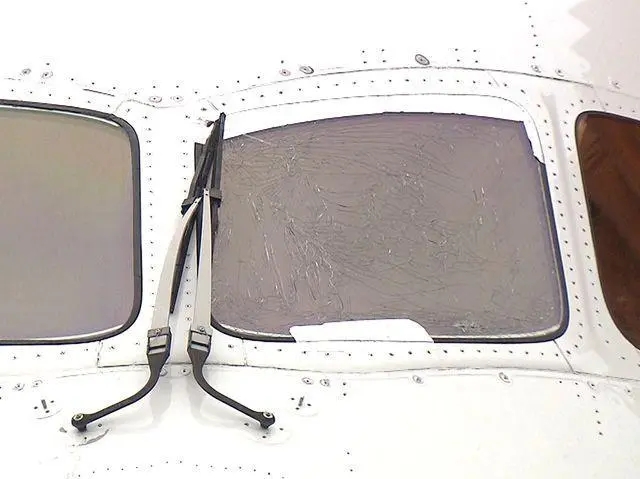
During the flight of a Japanese passenger plane, cracks appeared on the cockpit glass and the crew returned unharmed.
On January 13th, local time in Tokyo, during the flight of an All Nippon Airways flight from Shin Chitose Airport in Hokkaido, Japan to Toyama Airport, cracks appeared on the cockpit glass. The flight then returned to New Chitose Airport. The flight number is NH1182 and the aircraft type is Boeing 737.
According to reports, the flight carried a total of 59 passengers and 6 crew members, all of whom were not injured.
From the perspective of production line mechanical manufacturing and metal material processing, QCIT believes that these finished products clearly do not meet the usage or factory standards. If data or processes are tampered with or skipped during production and quality inspection, it may cause hidden dangers in the production of workpieces. Nowadays, various units are constantly laying off employees and even reducing the number of key talents in important positions of the company. QCIT GROUP believes that the company's organizational structure should not be deceived. Who is still using the small workshop thinking in the new industrial era should reflect on the technical personnel organizations in the United States and Japan, and please stop letting the wrong positions erode their technical credit.
BX has experienced another accident, and a US passenger plane's cabin door has fallen from a height of nearly 5 kilometers. According to CNN, on the evening of January 5th local time, an Airlines BX- flight made an emergency landing less than an hour after takeoff. There are reports that a window and part of the fuselage of the plane exploded in mid air.
According to the latest report, on the 6th, Airlines announced on its official social media account that the company has decided to temporarily suspend 65 BX- aircraft.
At around 5pm local time on the 5th, Airlines Flight flew from USA. According to the flight tracking website FlightAware, the flight returned to P. International Airport after flying for about 20 minutes.
Flight tracking data shows that when the aircraft began emergency descent, its flight altitude exceeded 16000 feet (approximately 4876 meters).
According to the latest report from the Japan Broadcasting Association on January 16th, a Korean Airlines aircraft collided with a Cathay Pacific aircraft from China Hong Kong at Shin Chitose Airport in Hokkaido, Japan.
According to Hokkaido Airport, which operates New Chitose Airport, at around 5:30 pm on the 16th, a phone call was received stating that a Korean Airlines and Cathay Pacific Airlines collided at New Chitose Airport, and detailed information is currently being confirmed. According to the police, no one has been injured, no fire has occurred, and the local fire department has not taken action.
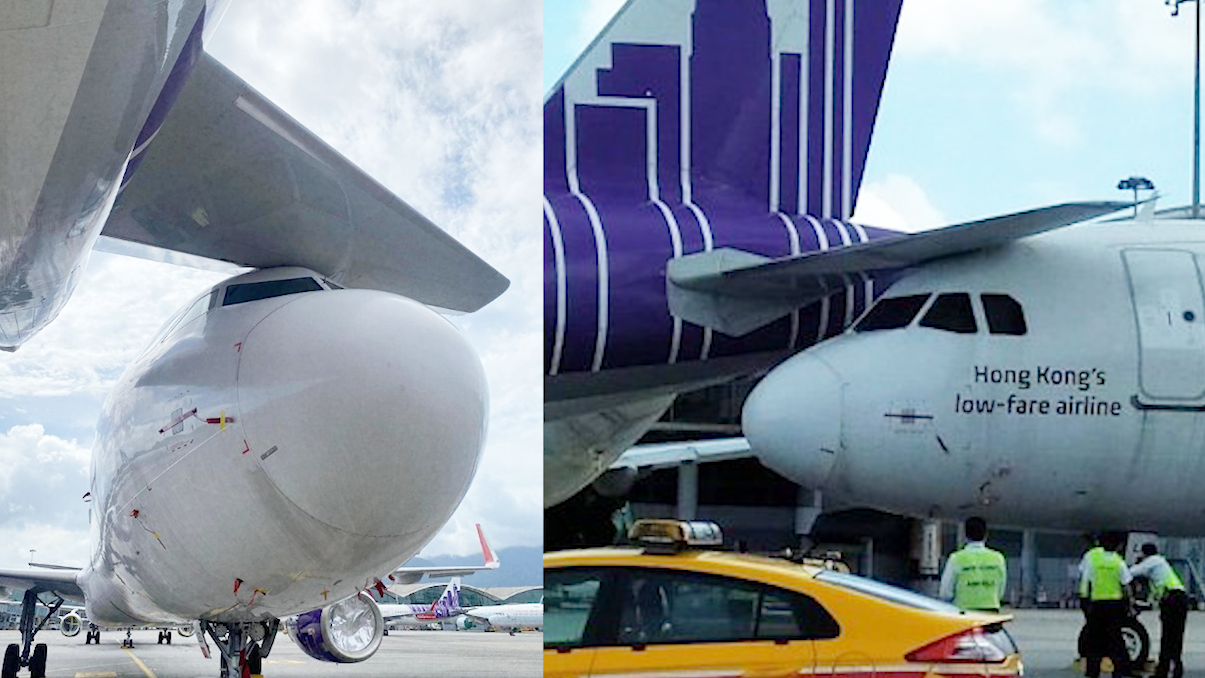
The aerospace industry used to be a breakthrough that all humans were proud of, but now it has repeatedly encountered deep-seated problems. Even on the surface, the conclusion is obvious. QCIT ZY-AI requires colleagues in North American aviation and new materials industries to return to the origin of quality, and not let such man-made disasters continue to spread. Frankly speaking, QCIT would rather believe that the above news is all fake, than that our industrial technology will begin to regress from the United States, Japan, South Korea, India and other places before it completes its intelligence, so sad and we shall do better.
According to a recent report by The Guardian, a storm hit Queensland, Australia during the recent Christmas season, resulting in power outages in many areas.
Some backup power systems of electric vehicles can be used as emergency generators to power electrical appliances. Christie Holmes, a 42 year old woman living on the Gold Coast of Queensland, bought a B. Atto3 electric car in February last year.
P.S. These people you are hating is far far ahead from you team already, quite wrong on your being fighting with the air and talking trash to who you try to cheat them to vote you, the so-call enermy is not even in the same level with you or beside your shoulder now, what a pity!


